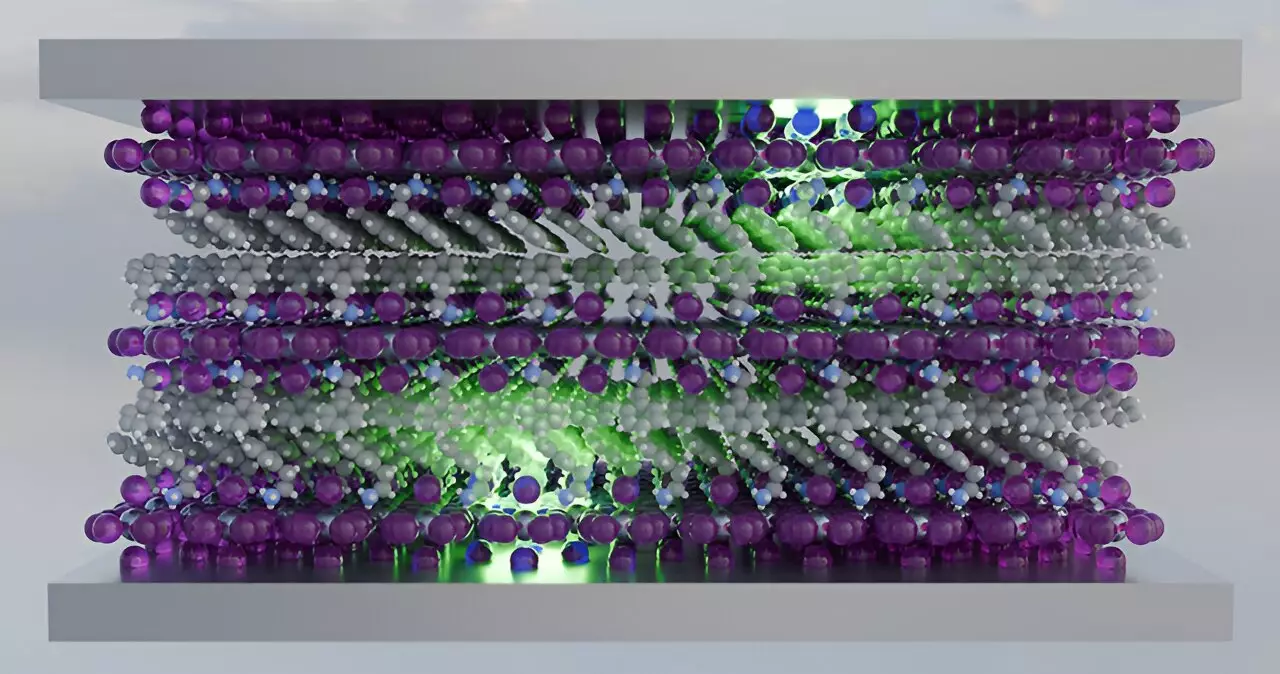In the realm of solar cells and light-emitting diodes (LEDs), the kinetics of molecules in an excited state are constantly battling against annihilation. The intricate systems governing these devices must find a delicate balance between processes that result in the loss of energy and those that lead to the desired outcome. One of the major culprits behind energy loss, especially in highly efficient systems, is known as exciton-exciton annihilation. This phenomenon ultimately leads to a decrease in solar efficiency and a reduction in light output in LEDs. It is crucial to have control over the levels of exciton-exciton annihilation, as this factor significantly impacts the overall efficiency of these optoelectronic devices.
Researchers from the National Renewable Energy Laboratory (NREL) in collaboration with the University of Colorado Boulder embarked on a groundbreaking journey to manipulate exciton/exciton annihilation by linking excitons with cavity polaritons. Cavity polaritons, essentially photons trapped between two mirrors, were introduced as a potential solution to combat energy dissipation and enhance efficiency in optoelectronic devices. Through their research published in the Journal of Physical Chemistry Letters, the team employed transient absorption spectroscopy to showcase how the spacing between the mirrors encompassing the 2D perovskite (PEA)2PbI4 (PEPI) layer can influence the loss mechanism. The chosen perovskite material holds promise for future LED applications, signifying a significant advancement in the field.
Jao van de Lagemaat, the director of the chemistry and nanoscience center at NREL and the lead scientist of the study, highlighted the transformative potential of gaining control over exciton-exciton annihilation in the active materials utilized in LEDs and solar cells. By mitigating energy losses, a substantial increase in efficiency could be achieved. The crux of their research revolved around the concept of strong coupling between photonic and electronic states, resulting in the formation of polaritons – hybrid entities comprising both light and matter. Through the implementation of a Fabry-Pérot microcavity comprising two partially reflective mirrors, the researchers successfully demonstrated ultrastrong coupling of the PEPI layer.
Unlocking the Power of Hybrid States: Manipulating Excited State Dynamics
The crux of their findings laid in the observed ultrastrong coupling effects on the PEPI layer within the microcavity. This innovative approach not only extended the lifetime of the excited state but also granted the researchers unprecedented control over exciton-exciton annihilation, thereby reducing the loss process significantly. The quantum nature of the hybrid states, known as polaritons, was instrumental in elucidating the observed phenomena. These polaritons seamlessly oscillated between a more photonic and more excitonic nature, facilitating a unique ‘phasing’ effect that allowed them to bypass each other if they happened to exhibit a predominant photonic character at the point of interaction.
The ability to influence the coupling strength between photonic and electronic states presented an intriguing avenue for regulating the relative durations of polaritons as photons. This pivotal adjustment played a pivotal role in dictating the energy loss within these dynamic systems. The researchers showcased the profound impact of strong coupling effects in reshaping the excited state dynamics of the PEPI system, underscoring the transformative potential of their findings. Rao Fei, a graduate student from the University of Colorado Boulder involved in the experimental work, noted the profound impact of a seemingly straightforward experiment involving the placement of a material between two mirrors on altering the system’s behavior.
The groundbreaking research conducted by the collaborative team from NREL and the University of Colorado Boulder sheds light on the paramount importance of controlling exciton-exciton annihilation in enhancing the efficiency of solar cells and LEDs. By harnessing the power of cavity polaritons and strong coupling effects, the researchers have opened new doors towards optimizing energy management in optoelectronic devices. The ability to manipulate and fine-tune the dynamics of excited states holds immense promise for revolutionizing the field of photonics and advancing towards a greener and more sustainable future.


Leave a Reply